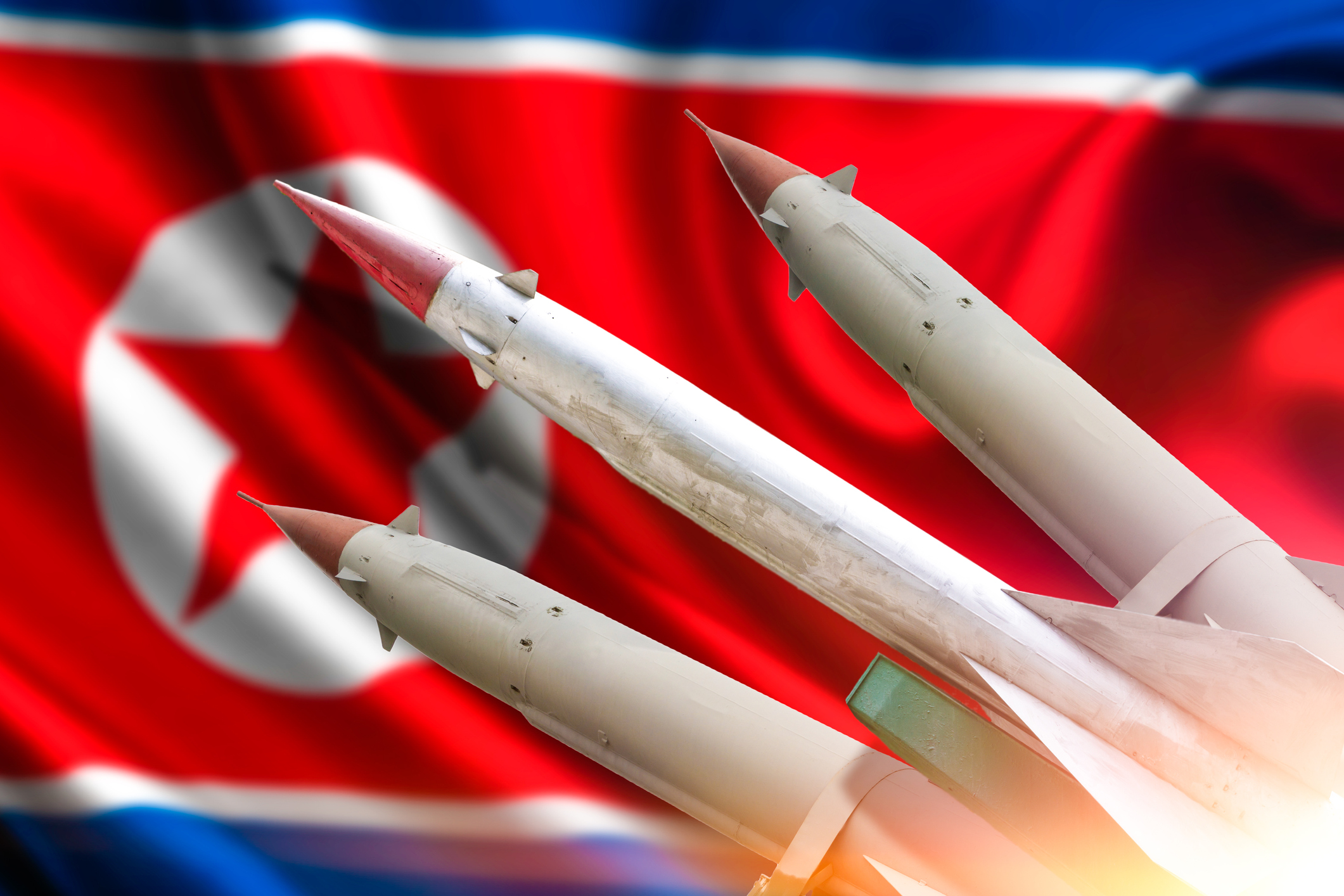
North Korea continues to launch missile after missile. No matter—or perhaps because of—how angry it makes its rivals, the isolated East Asian nation keeps conducting “tests,” causing the world to wonder: is it just bombast or is Pyongyang preparing for an actual blast?
North Korea has been hell-bent on developing its nuclear program and missile capabilities for the last six decades. Recently though, the country has ramped up its brinkmanship with more regular tests and explosive rhetoric—often shooting projectiles into the ocean and warning its enemies that the next ones could be coming for them.
This year alone, North Korea has conducted at least 23 missile tests, according to a review by TIME, and it shows no signs of stopping.
Uk Yang, an expert in military strategies at the Asan Institute for Policy Studies in South Korea, says that North Korea typically frames its launches as responses to increasing pressure around the peninsula, as Seoul and Washington become more engaged militarily. The tests, however, usually only prompt the allies to do more military drills, which are then met with even more tests, in a seemingly endless tit-for-tat display of strength.
Last year, North Korea broke records: data from the James Martin Center for Nonproliferation Studies, which has been documenting North Korean missile launches since 1984, showed 68 tests in 2022—10 times more than in 2021.
The launches have been a way for North Korea to show off its varied warhead carriers—including low-altitude cruise missiles which can be guided to attack close targets, as well as ballistic missiles launched high up into the atmosphere that can travel thousands of miles at hypersonic speeds.
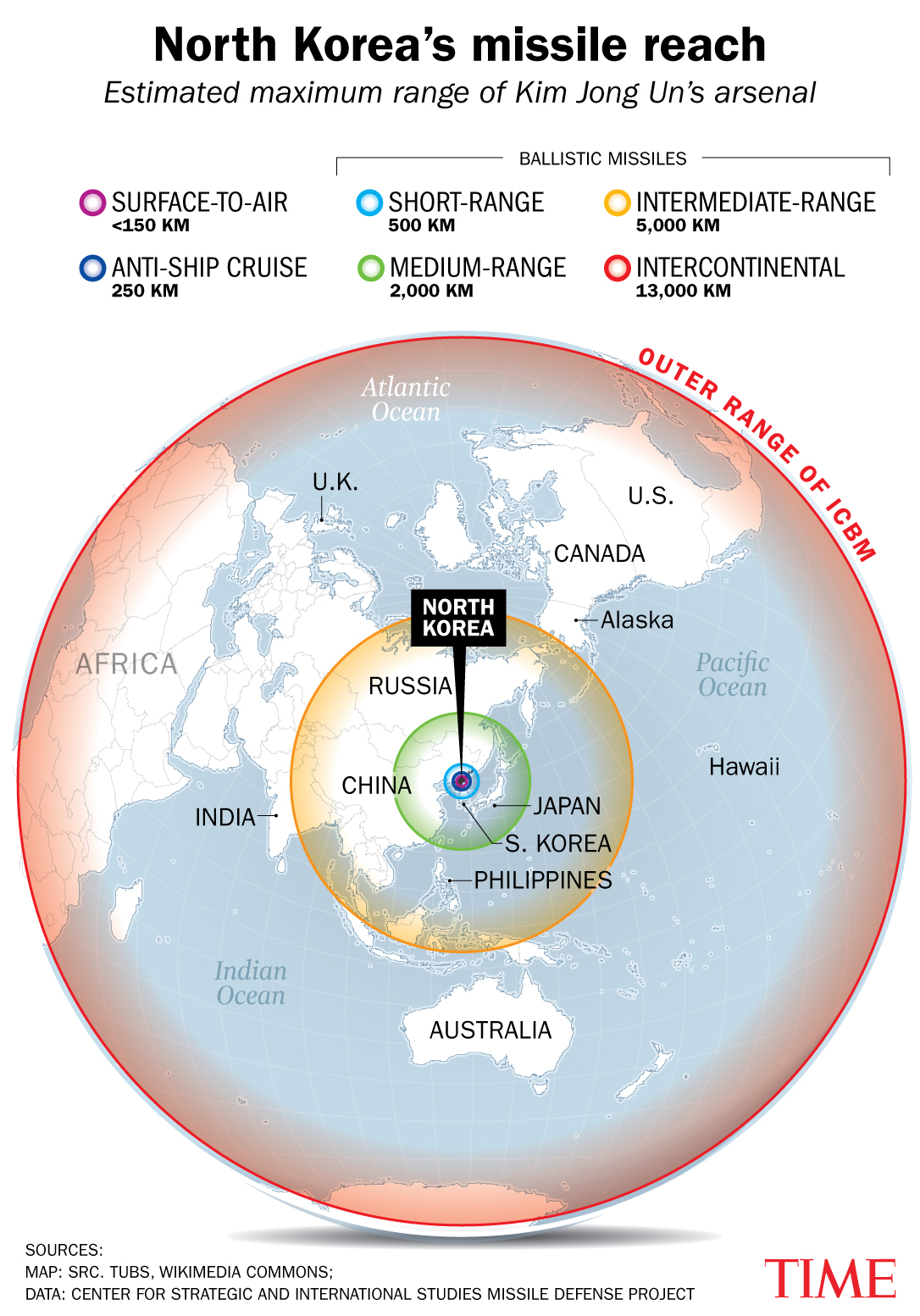
But it’s not just missiles that the country has been developing. In April this year, North Korea tested unmanned underwater attack drones, which the country has claimed can carry a nuclear warhead and could trigger a “radioactive tsunami.” And Pyongyang’s attempts to launch its own military reconnaissance satellite this year have caused international panic, even prompting evacuation orders in Japan.
North Korea’s biggest threat is its nuclear arsenal, which the nation’s Supreme Leader Kim Jong Un has threatened to use “anytime and anywhere.” Researchers at the Bulletin of Atomic Scientists “cautiously estimate” North Korea to have already assembled 20 to 30 nuclear warheads and to have enough fissile material to build as many 45 to 55 nuclear weapons. Other estimates suggest North Korea could have more than 100 nuclear weapons by now. This year, Kim has repeatedly called for the country to “exponentially” increase its nuclear weapon production.
Some observers believe North Korea’s weapons development program is simply a bargaining chip to secure greater recognition or economic aid, but with ever-escalating tests and remonstrations, there remains an element of dangerous uncertainty.
Bernard Loo, senior fellow at the S. Rajaratnam School of International Studies in Singapore, tells TIME that he and many other experts like him tend to view North Korea as a “petulant child” demanding attention, since “it has absolutely no leverage whatsoever, except when it comes to nuclear and ballistic missiles tests.” That doesn’t mean there isn’t anything to worry about. “As the child does not get any attention, sometimes it will ratchet up the tantrums,” Loo says. “I’m struggling to imagine what kind of behavior they could do [next] to make us look back at them and pay attention.”
Tracking all of North Korea’s missile tests in 2023
Jan. 1: One SRBM
Pyongyang started 2023 with a bang: in the early morning of New Year’s Day, it fired one short-range ballistic missile (SRBM) into the East Sea.
No other launches were made until February, after the grand display of military equipment on Feb. 8 which unveiled at least 15 missiles, including 11 Hwasong-17s—North Korea’s latest intercontinental ballistic missile (ICBM) dubbed the “monster missile,” which is believed to be capable of carrying multiple nuclear warheads. Analysts also observed some solid-fuel ICBM canisters, which would allow North Korea to launch its ballistics faster compared to when the missile propellant needs to be refueled in liquid form.
Feb. 18: One ICBM
The mid-February launch of the Hwasong-15 from the Pyongyang International Airport marks North Korea’s first firing of an ICBM this year. Launched at a lofted trajectory, it reached an altitude of more than 3,500 mi. and flew for about 66 minutes.
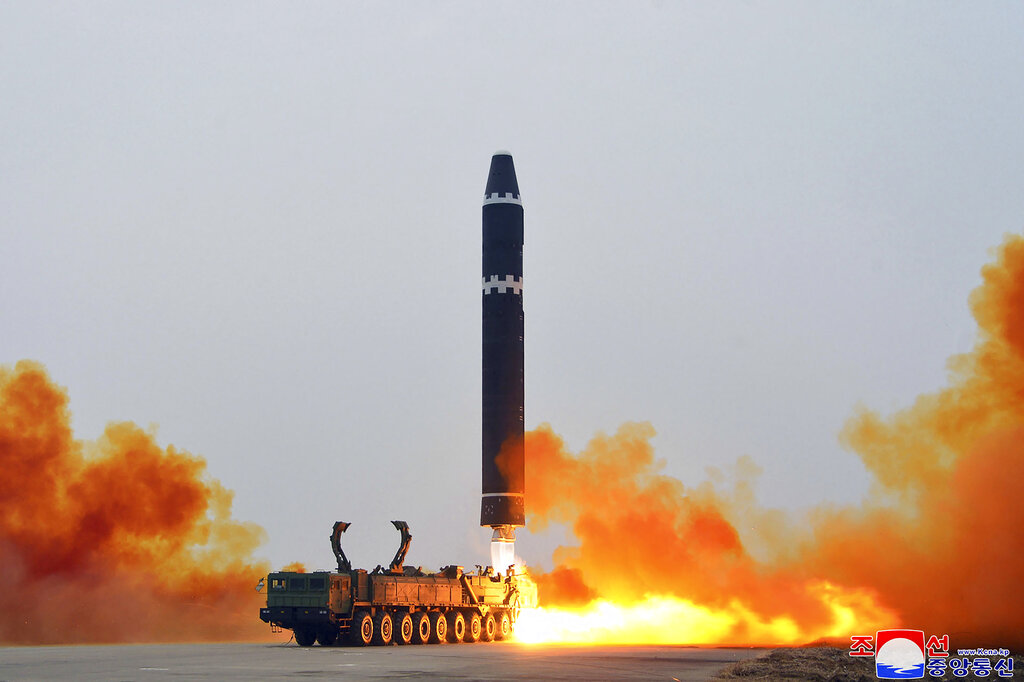
North Korea’s ICBMs are launched at high angles to avoid hitting any countries during testing—but in an actual attack, they would be launched at much lower angles to maximize their trajectory and reach their targets. But whether or not these missiles will survive the high-temperature, high-stress environment of the earth’s atmosphere upon re-entry in real-life combat remains unclear, says Joseph Dempsey from the International Institute of Strategic Studies. “That doesn’t mean they don’t [have that ability],” Dempsey cautions. “It just means they haven’t demonstrated.”
Feb. 20: Two SRBMs
These SRBMs were launched from the country’s western front, landing in the East Sea. Following the launch, South Korea imposed sanctions on four individuals and five entities linked to North Korea’s missiles and nuclear weapons program.
Feb. 23: Four cruise missiles
North Korea claimed it fired four cruise missiles called Hwasal-2 from the eastern city of Kimchaek in Hamgyong Province, just a day before the U.S. and South Korea started joint exercises in the Korean peninsula. Pyongyang’s central news agency claimed the missiles traveled 1,240 miles in eight-shaped trajectories through the East Sea. However, South Korea’s defense ministry cast doubt on the details of North Korea’s purported launch.
March 9: Six SRBMs
North Korea ramped up its missile tests in March. Kim and his daughter reportedly had a front-row seat to the firing of six short-range missiles toward the sea off North Korea’s west coast under wargames. Kim, according to state media, expressed “great satisfaction” over the drills, as the troops “confidently” demonstrated the ability to “counter an actual war.”
March 12: Two cruise missiles
South Korea and the U.S. were scheduled to conduct large-scale military drills on March 13. In apparent protest, on the eve of the exercises, North Korea fired two cruise missiles from a submarine in the East Sea—which displayed the country’s amphibious launch abilities.
March 14: Two SRBMs
Continuing its protests, North Korea fired two more SRBMs from its west coast. While the U.S. Indo-Pacific Command said the launches don’t pose an immediate threat to its allies, it said the tests highlight the “destabilizing impact” of the North’s missile programs.
March 16: One ICBM
The second ICBM launched this year was the homegrown Hwasong-17, which had been paraded in January. North Korea said the launch was meant to “strike fear into the enemies” by showing how swift Pyongyang could respond to threats.
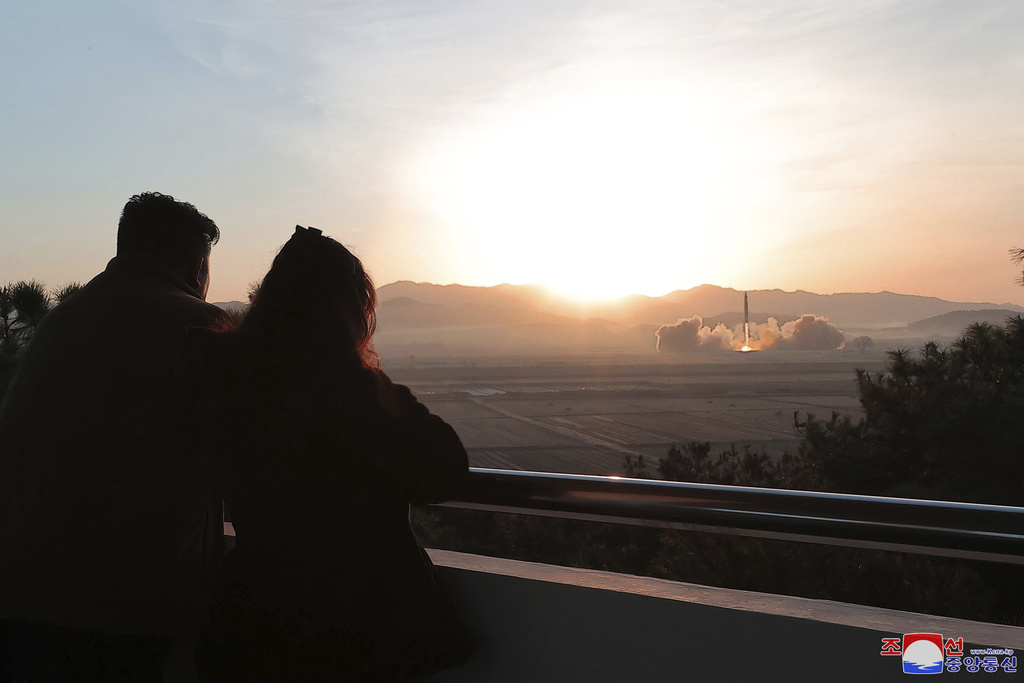
Yang, from the Asan Institute for Policy Studies, says he’s skeptical of the power of the missile’s large payload, pointing out that it’s not normal to have such road-mobile weapons. “Why U.S. or Russia wouldn’t have that big ICBM?” Yang says. “Because it’s not effective.”
March 19: One SRBM
Another SRBM was launched from Cholsan County, North P’yŏngan Province. The area contains North Korea’s key long-range rocket launch site. North Korean state news agencies said the country staged a drill “simulating a nuclear strike at a major enemy target” that same day, using a missile tipped with “a test warhead simulating a nuclear warhead.”
March 23: Four cruise missiles
South Korean defense officials said the North had fired at least four cruise missiles from its eastern Hamhung province. North Korea’s state media said the missiles used similar simulated nuclear warheads like the previously launched ones, but these missiles also reportedly tested minimum-altitude flight and evasive maneuvers.
March 26: Two SRBMs
South Korea and Japan detected two more SRBMs launched from North Korea’s east coast. The U.S. Indo-Pacific Command reiterated the “destabilizing impact” of the tests but said there was no immediate threat.
April 13: One ICBM
Japan’s Ministry of Defense and South Korea’s military detected the launch of at least one ballistic missile early Thursday morning. The launch prompted Japan to issue a warning over the island prefecture of Hokkaido, cautioning residents to evacuate or take shelter. It later retracted the warning.
Pyongyang said that it was a test of a new type of solid-fuel ICBM, the Hwasong-18. The launch took place after North Korea’s Kim expressed dismay at the U.S. flying nuclear-capable B-52 bombers over the Korean Peninsula about a week earlier.
July 12: One ICBM
At around 10 a.m., South Korea’s military detected a missile launch from the Pyongyang area. It came after days of North Korea raising concern over U.S. military spy aircraft reportedly making incursions in the hermit state’s exclusive economic zone.
North Korean state media confirmed that Kim personally oversaw the test-fire of another Hwasong-18, declaring that Pyongyang launched the projectile in “a grave period when the military security situation on the Korean peninsula and in the region has reached the phase of nuclear crisis beyond the Cold War era.”
July 19: Two SRBMs
South Korean military officials flagged the launch of two short-range missiles from the Sunan district in Pyongyang, a day after the arrival of an American nuclear-armed ballistic submarine in Busan and at the start of a new U.S.-South Korea security dialogue.
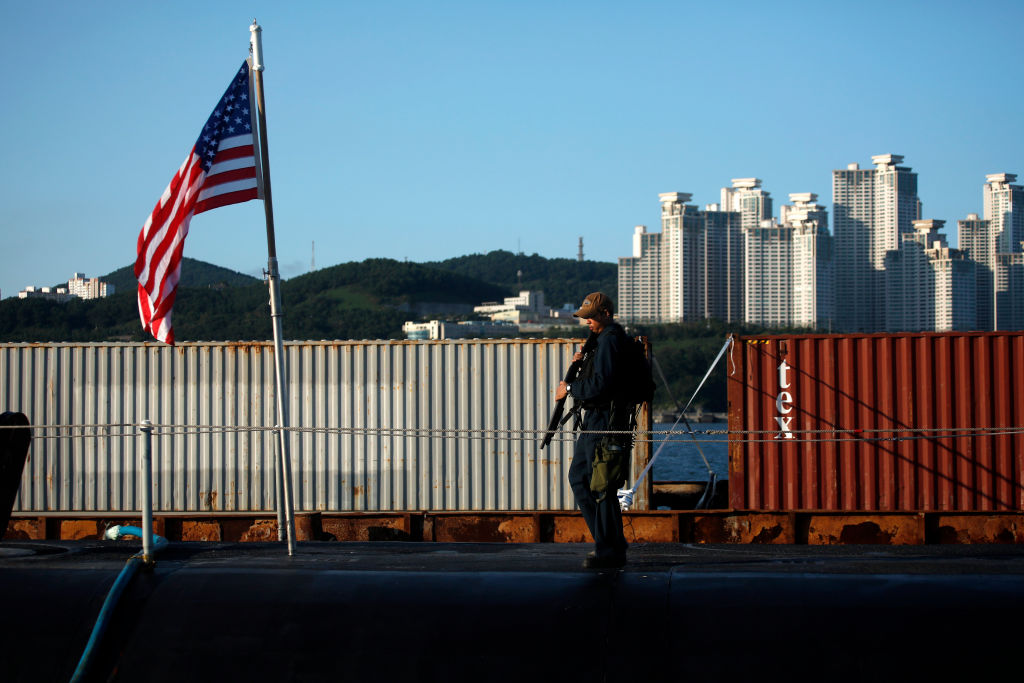
July 22: An unconfirmed number of cruise missiles
At around 4 a.m., North Korea fired several cruise missiles toward its western sea, according to South Korea’s military. Seoul did not specify the actual number of missiles, but said that it is working with U.S. intelligence authorities to analyze the launches.
July 24: Two SRBMs
South Korea and Japan confirmed the launch of two short-range ballistic missiles from Pyongyang into the East Sea. The launch comes after the arrival of another nuclear-powered submarine in Jeju.
The White House condemned the launches, with Press Secretary Jean Karin-Pierre commenting that the U.S. defense of its allies, South Korea and Japan, is “ironclad.”
Around Aug. 21: An unconfirmed number of cruise missiles
North Korean state media KCNA reported that Kim, on an unspecified date, oversaw a unit of the East Sea Fleet of the Navy of the Korean People’s Army and watched a patrol ship stage “a drill of launching strategic cruise missiles.”
South Korea’s military officials said they detected signs of the launch in advance and that parts of North Korea’s report were “exaggerated and different from facts,” Seoul-based news organization Yonhap reported.
August 30: Two SRBMs
Amid the Ulji Freedom Shield joint military exercise between South Korea and the U.S., Seoul military officials detected that North Korea fired two short-range ballistic missiles in protest at around 11:40 p.m. and 11:50 p.m. local time. The Korean People’s Army confirmed the launches, decrying the drills as “a serious threat.”
Sept. 2: Two cruise missiles
Two days after the U.S.-South Korea military drills ended, Seoul detected another missile test, with projectiles headed for the Yellow Sea to the peninsula’s west. North Korean state media confirmed the launch of two cruise missiles “loaded with mock nuclear warheads” that detonated mid-air.
Sept. 13: Two SRBMs
South Korean military officials detected two suspected short-range ballistic missiles fired from near the Pyongyang international airport minutes before noon local time. Japanese officials confirmed the launch and stated that the missiles fell into waters outside Japan’s exclusive economic zone.
The launch notably took place just hours before Kim met with Vladimir Putin in Russia for a suspected arms deal—the North Korean leader’s first trip abroad since 2019.
Nov. 22: An unspecified ballistic missile
A day after Pyongyang supposedly put in orbit a new military spy satellite, it fired an unspecified ballistic missile from the Sunan area toward the East Sea at around 11:05 p.m., according to Seoul. The launch reportedly failed, though South Korean and U.S. intelligence authorities are still conducting an analysis.
Dec. 17: One SRBM
North Korea fired a short-range missile from Pyongyang on Sunday evening, according to South Korea and Japan. The missile flew some 570 kilometers before landing in the East Sea. The launch came hours after Seoul reported on the arrival of a U.S. nuclear-powered submarine in the southeastern port city of Busan.
Dec. 18: One ICBM
South Korea’s military detected the launch of an intercontinental ballistic missile at around 8:24 a.m.—flying for about 1,000 km. before landing in the East Sea, some 250 km. northwest of Hokkaido. Japan’s defense ministry said the missile was in the air for about 73 minutes.
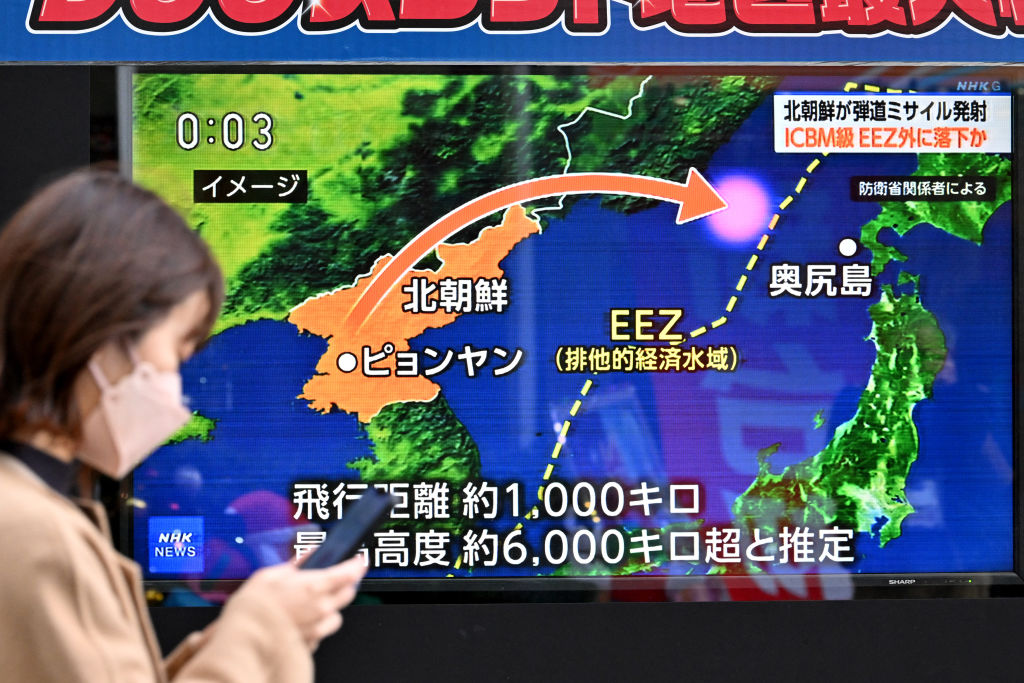
What have we learned from these launches?
Despite leaps in surveillance technology, gathering intelligence on North Korea’s opaque missiles program is still limited, says Loo from Singapore, as much of the assessment is extrapolated from existing combat systems. He also points out that the hermit state has developed a skill for “broadcasting television footage” of drills and launches that aren’t checked by independent third parties. “We really have very little understanding of what’s going on in there.”
But if Pyongyang increases its provocations, it risks revealing more about its weapon systems, says Dempsey. “As much as they want to prove the credibility [of] this system, it could actually backfire,” he explains, saying that any display of firepower risks exposing weaknesses and potential failures.
Another reason we know so little about North Korea’s existing arsenal and capabilities, says Dempsey, is partly because of how fast its military keeps rolling out new technology. It’s unclear what they have that actually works. “That’s almost too much ambition,” Dempsey says of Pyongyang’s strategy. “You’re doing things … running before you can even walk.”
Still, the uncertainty created by a vicious cycle of North Korea appearing to build up its weaponry followed by the U.S. and South Korea strengthening their military alliance just in case isn’t necessarily putting the world on a path to nuclear disaster. It’s how deterrence works, Dempsey says. “That ambiguity? It’s good and bad…It means that nobody wants to find out either side.”
More Must-Reads from TIME
- Donald Trump Is TIME's 2024 Person of the Year
- TIME’s Top 10 Photos of 2024
- Why Gen Z Is Drinking Less
- The Best Movies About Cooking
- Why Is Anxiety Worse at Night?
- A Head-to-Toe Guide to Treating Dry Skin
- Why Street Cats Are Taking Over Urban Neighborhoods
- Column: Jimmy Carter’s Global Legacy Was Moral Clarity
Contact us at letters@time.com